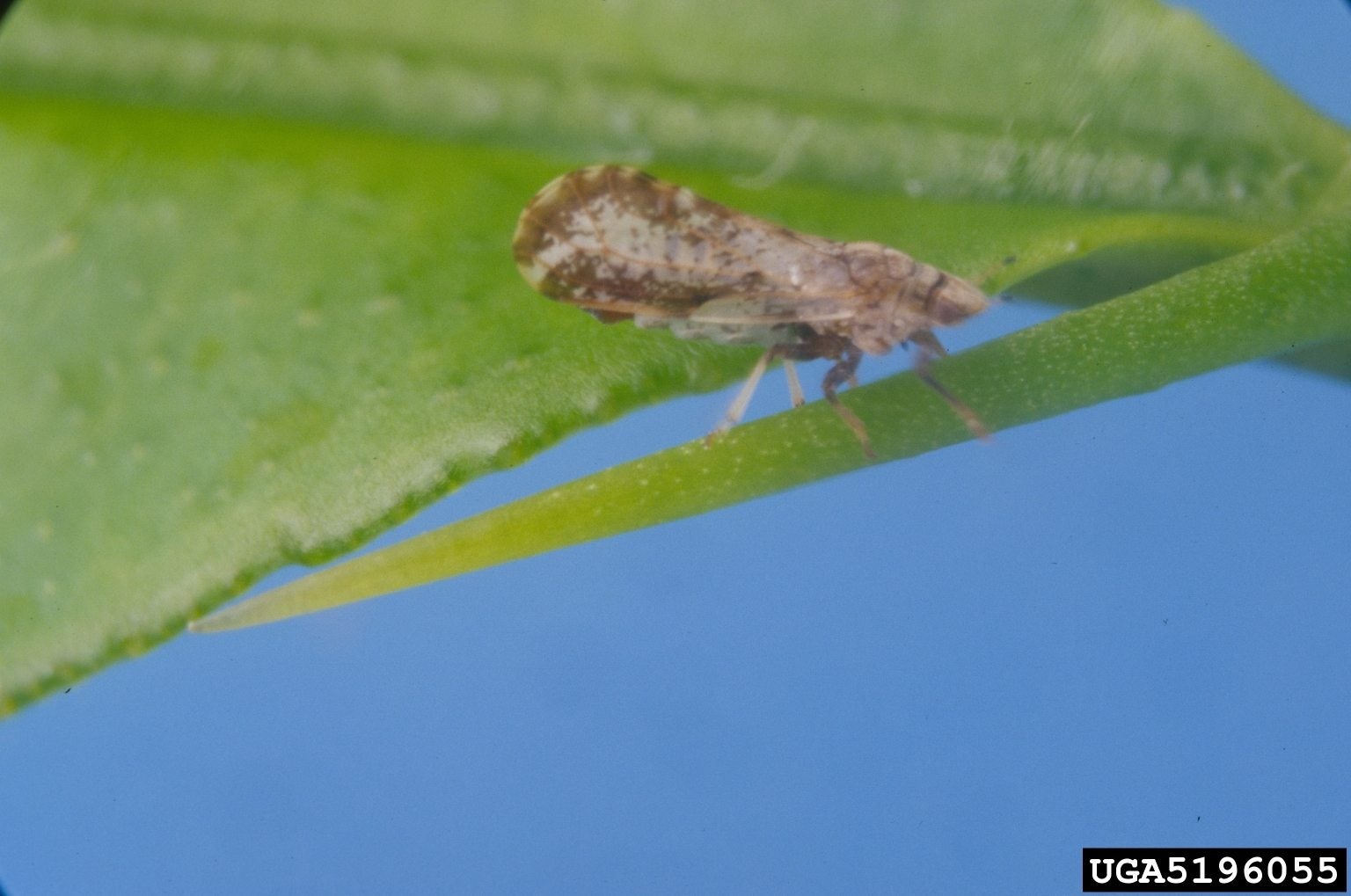Asian Citrus Psyllid Damage: Tips On Treatment For Asian Citrus Psyllids


If you’re noticing problems with your citrus trees, it could be pests – more specifically, Asian citrus psyllid damage. Learn more about the Asian citrus psyllid life cycle and the damage these pests cause, including treatment, in this article.
What is an Asian Citrus Psyllid?
The Asian citrus psyllium is an insect pest threatening the future of our citrus trees. Asian citrus psyllid feeds on citrus tree leaves during its adult and nymph stages. While feeding, the adult Asian citrus psyllid injects a toxin into the leaves. This toxin causes the leaf tips to break off or grow curled and twisted. While this curling of the leaves does not kill the tree, the insect can also spread the disease Huanglongbing (HLB). HLB is a bacterial disease that causes citrus trees to turn yellow and causes the fruit to not fully ripen and grow deformed. Citrus fruits from HLB will also grow no seeds and will taste bitter. Eventually, HLB infected trees will stop producing any fruit and die.
Asian Citrus Psyllid Damage
There are seven stages of the Asian citrus psyllid life cycle: egg, five stages of the nymph phase, and then the winged adult.
- Eggs are yellow-orange, small enough to be overlooked without a magnifying glass and laid in the curled tips of new leaves.
- The Asian citrus psyllid nymphs are tan-brown with white, stringy tubules hanging from their bodies, to run honey away from their bodies.
- The adult Asian citrus psyllid is a winged insect about 1/6” (4 mm.) long with tan and brown mottled body and wings, brown heads and red eyes.
When the adult Asian citrus psyllid feeds on leaves, it holds its bottom up in a very distinctive 45-degree angle. It is often identified just because of this unique feeding position. The nymphs can only feed on young tender leaves, but they are easily identified by the white waxy tubules hanging from their bodies. When psyllids feed on leaves, they inject toxins that distort the shape of the leaves, causing them to grow twist, curled and misshaped. They can also inject the leaves with HLB, so it is important to regularly check your citrus trees for any signs of Asian citrus psyllid eggs, nymphs, adults, or feeding damage. If you find signs of Asian citrus psyllids, contact your local county extension office immediately.
Treatment for Asian Citrus Psyllids
The Asian citrus psyllid primarily feeds on citrus trees such as:
It can also feed upon plants like:
- Kumquat
- Orange jasmine
- Indian curry leaf
- Chinese box orange
- Lime berry
- Wampei plants
Asian citrus psyllids and HLB have been found in Florida, Texas, Louisiana, Alabama, Georgia, South Carolina, Arizona, Mississippi, and Hawaii. Companies, like Bayer and Bonide, have recently put insecticides on the market for Asian citrus psyllid control. If this insect is found, all plants in the yard should be treated. Professional pest control may be the best option though. Professionals trained and certified in handling Asian citrus psyllids and HLB will usually use a foliage spray containing TEMPO and a systemic insecticide like MERIT. You can also prevent the spread of Asian citrus psyllids and HLB by buying only from reputable local nurseries and not moving citrus plants from state to state, or even county to county.
Gardening tips, videos, info and more delivered right to your inbox!
Sign up for the Gardening Know How newsletter today and receive a free copy of our e-book "How to Grow Delicious Tomatoes".
-
 Looking For Plants To Give You The Soft And Fuzzies? Try These 5 Fuzzy Leaf Plant Options
Looking For Plants To Give You The Soft And Fuzzies? Try These 5 Fuzzy Leaf Plant OptionsLovers of texture, drama, silver foliage and tactile plants will adore these special sensory garden additions. These fuzzy leaf plant options will leave you all aglow
By Susan Albert
-
 Get Ready For A Summer Of Hummers! Grow These Full Sun Hummingbird Plants and Flowers
Get Ready For A Summer Of Hummers! Grow These Full Sun Hummingbird Plants and FlowersIf you’re lucky enough to enjoy a sunny backyard, make sure you are maxing out on your pollinator opportunities and grow these full sun hummingbird plants and flowers
By Tonya Barnett